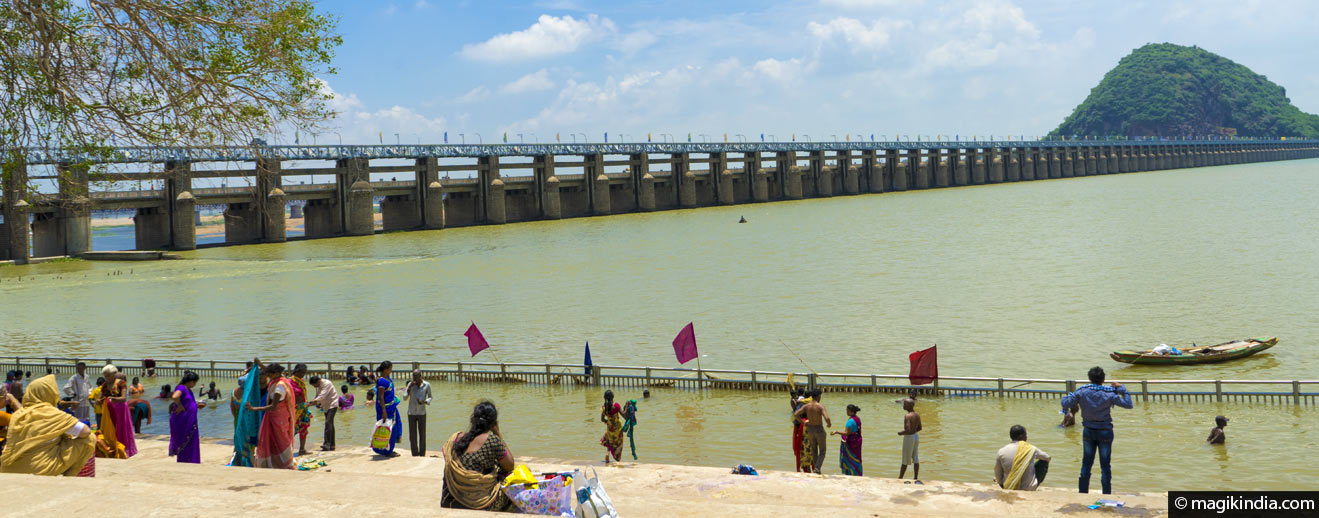
Vijayawada, city of the goddess Kanaka
Located on the banks of the Krishna River, Vijayawada is a major trading and business centres in Andhra Pradesh. The city has very few monuments to see but it is a pleasant place to immerse yourself in the spiritual atmosphere of the famous Durga temple or to visit the beautiful rock-cut caves of Undavalli.
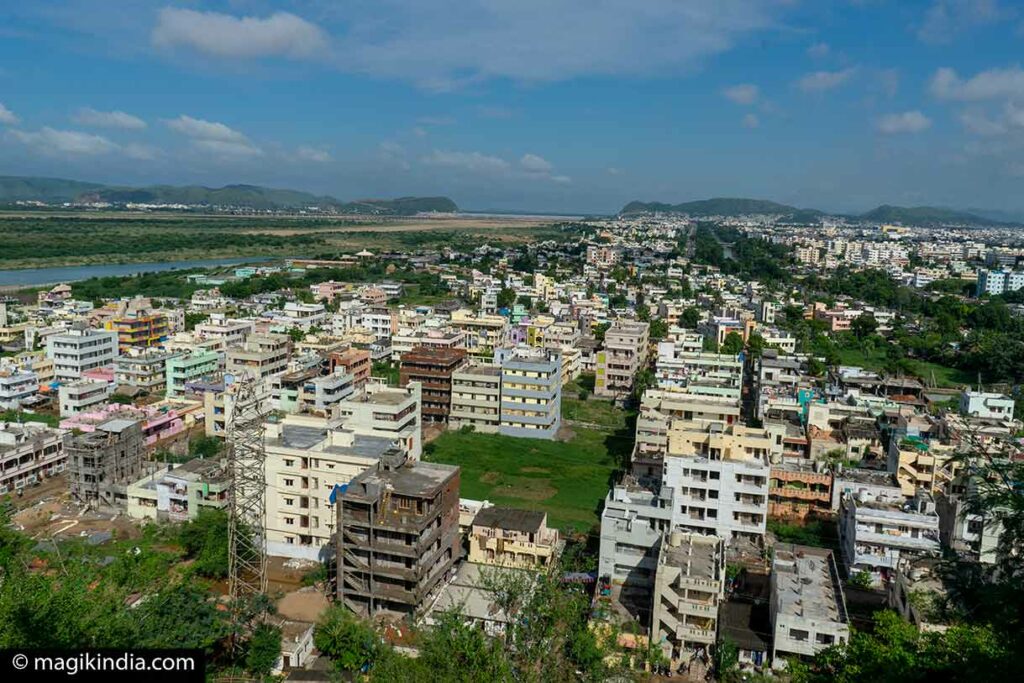
Kanaka Durga Temple
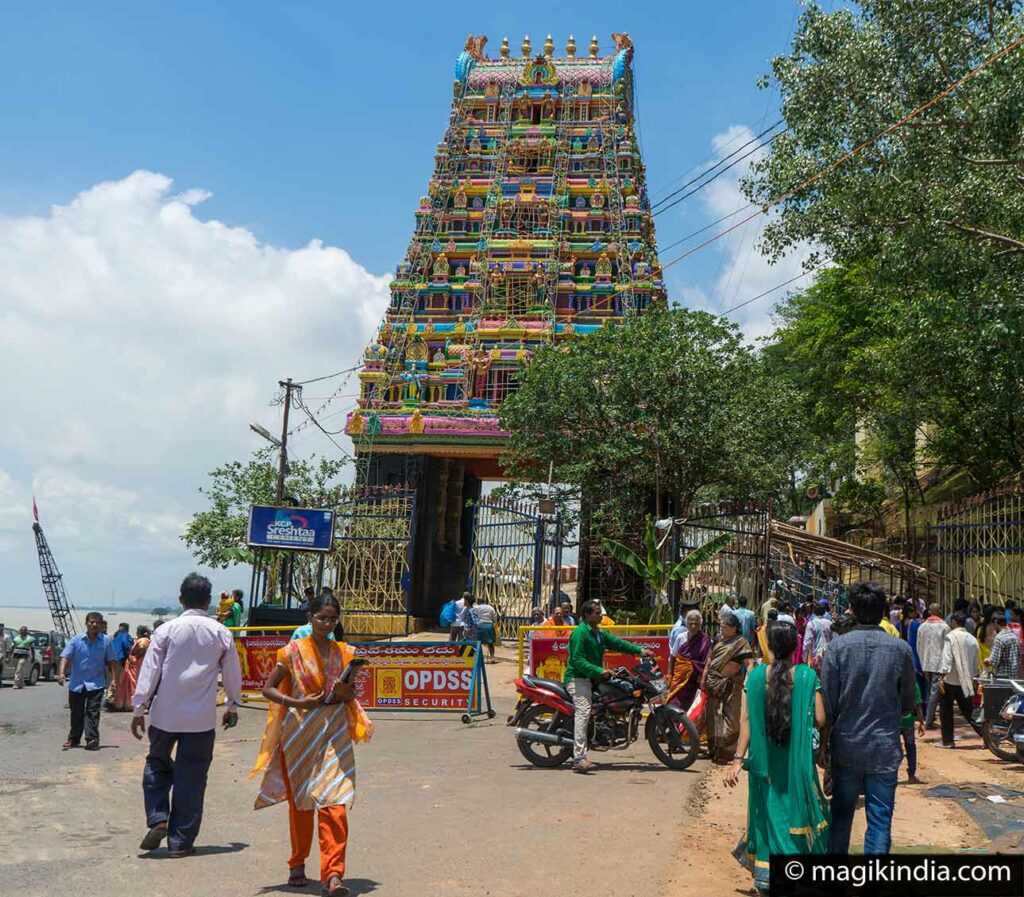
Kanaka Durga Temple is the most famous temple in Vijayawada and a high place of pilgrimage in Andhra Pradesh. It is located on the Indrakeeladri hill, on the banks of Krishna River.
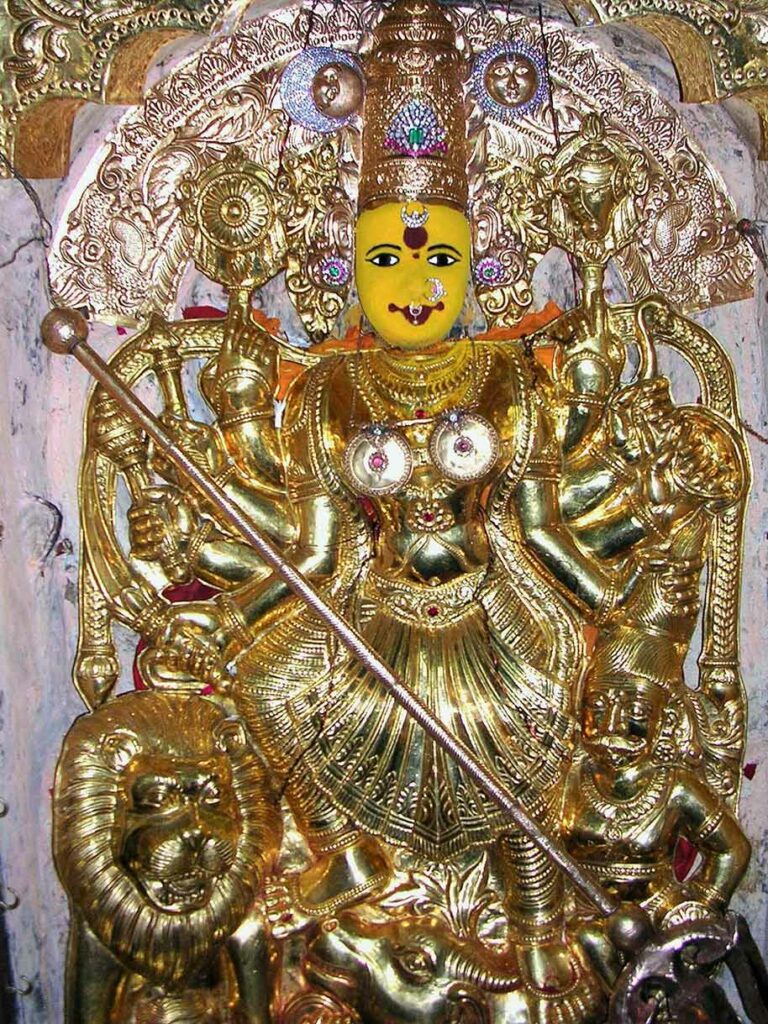
The presiding Deity is the goddess Kanaka Durga represented with eight arms, each holding a weapon, in a standing posture over the demon Mahishashura and piercing him with her trident. The vedas (ancient hindu scriptures) have described the deity as ‘Swayambhu’ or self-manifested.
A unique feature is that here Durga stands at the right side of Malleswara (her consort Shiva). Generally, in Hindu tradition Goddesses are on the left of their male consorts. This shows that the ‘Shakti’ or feminine energy is predominant in this temple.
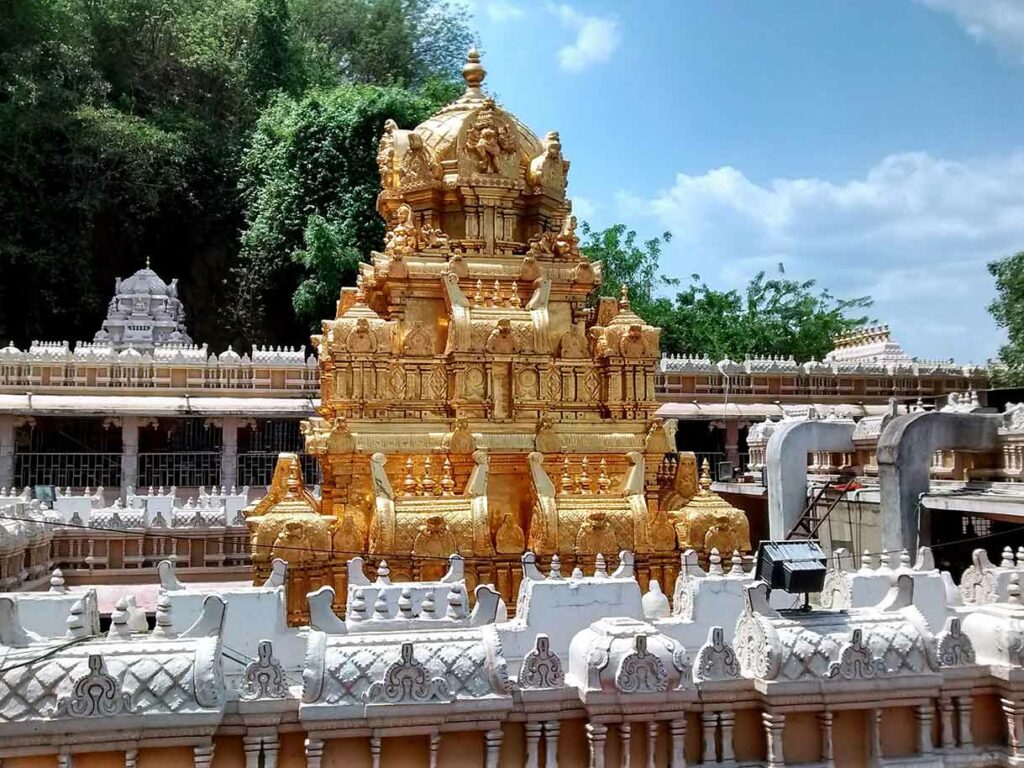
Legend has it that the demons acquired great powers and began harassing the sages on the earth. Sage Keeladri, a shaktiya devotee, practiced severe penances, and when the goddess Kanaka Durga appeared, the sage pleaded Her to reside on his head and keep vigil on the wicked demons. Kanaka Durga asked Keeladri to take the form of hill to enable Her stay on him. Thus Keeladri became the abode of Durga.
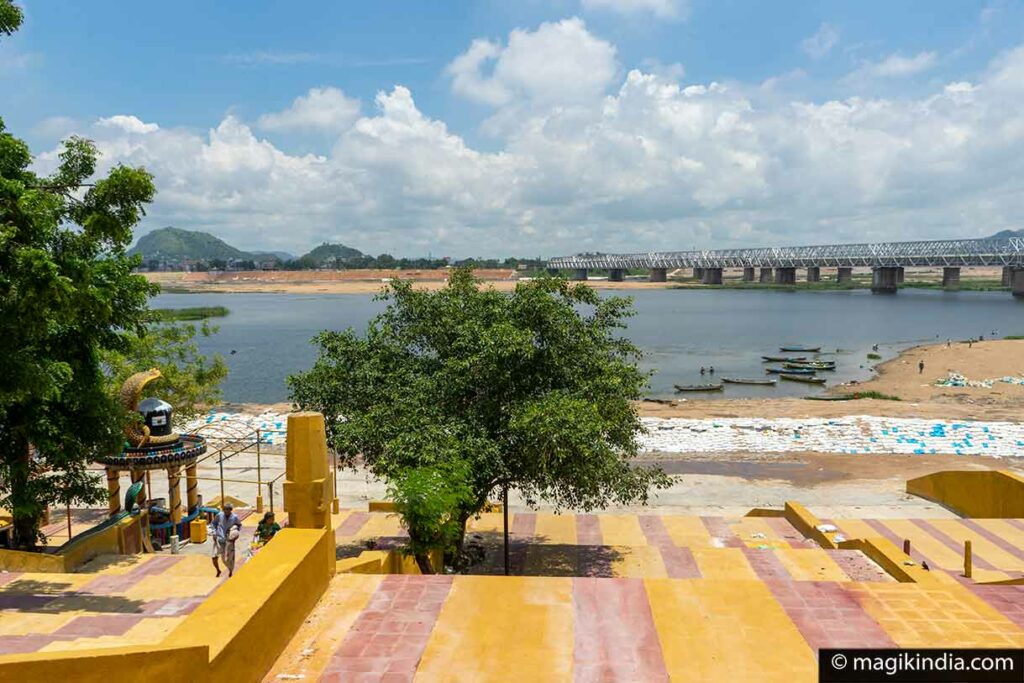
She took the form of Mahisasura Mardini with eight arms holding different weapons, riding on a lion and trampling Mahishasura demon on the hill of Indrakeeladri freeing the people of Vijayawada from evil. As celestial beings like Indra visited the place, the hill came to be called Indrakeeladri.
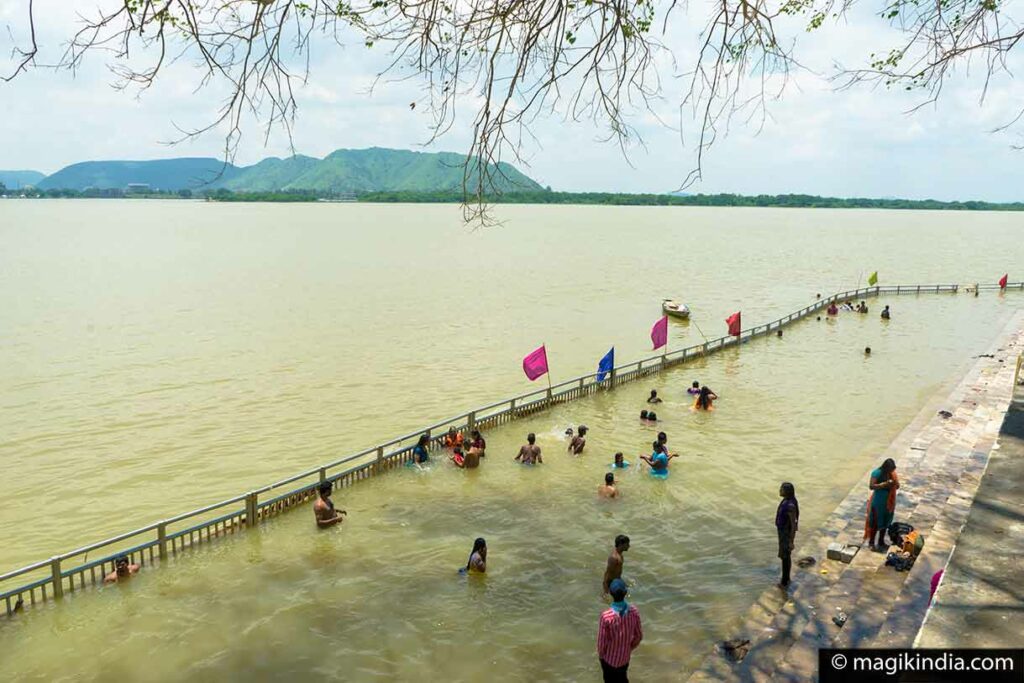
Undavalli Caves
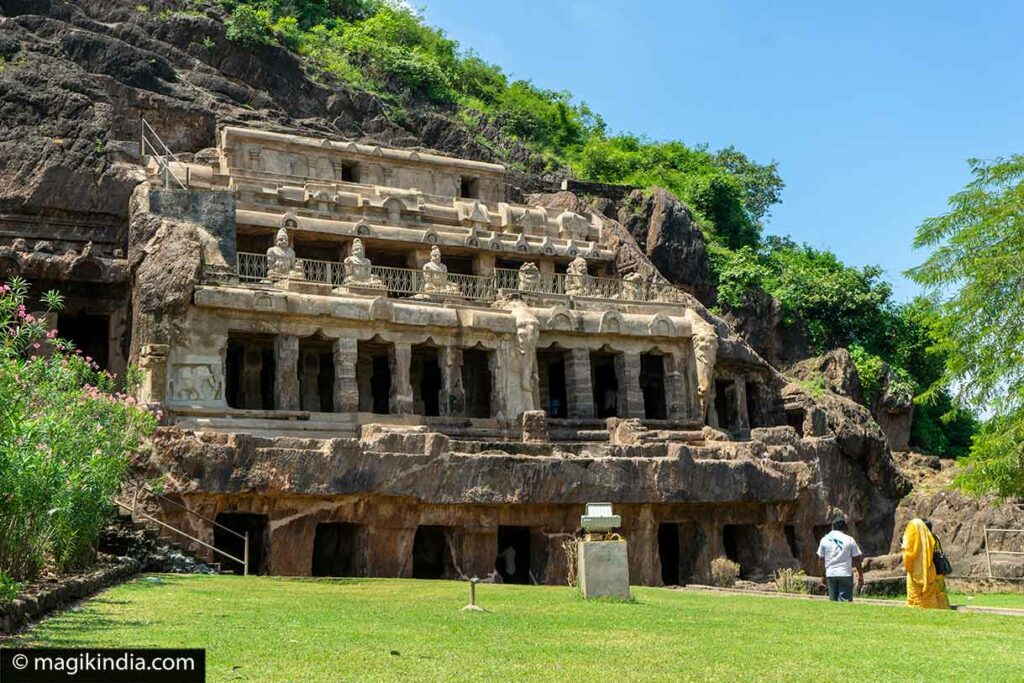
The beautiful Undavalli Caves are one of the finest example of Indian rock-cut architecture together with Ajanta, Ellora, Elephanta or Udayagiri. They are located in Undavalli of Guntur district, 6 km south west from Vijayawada.
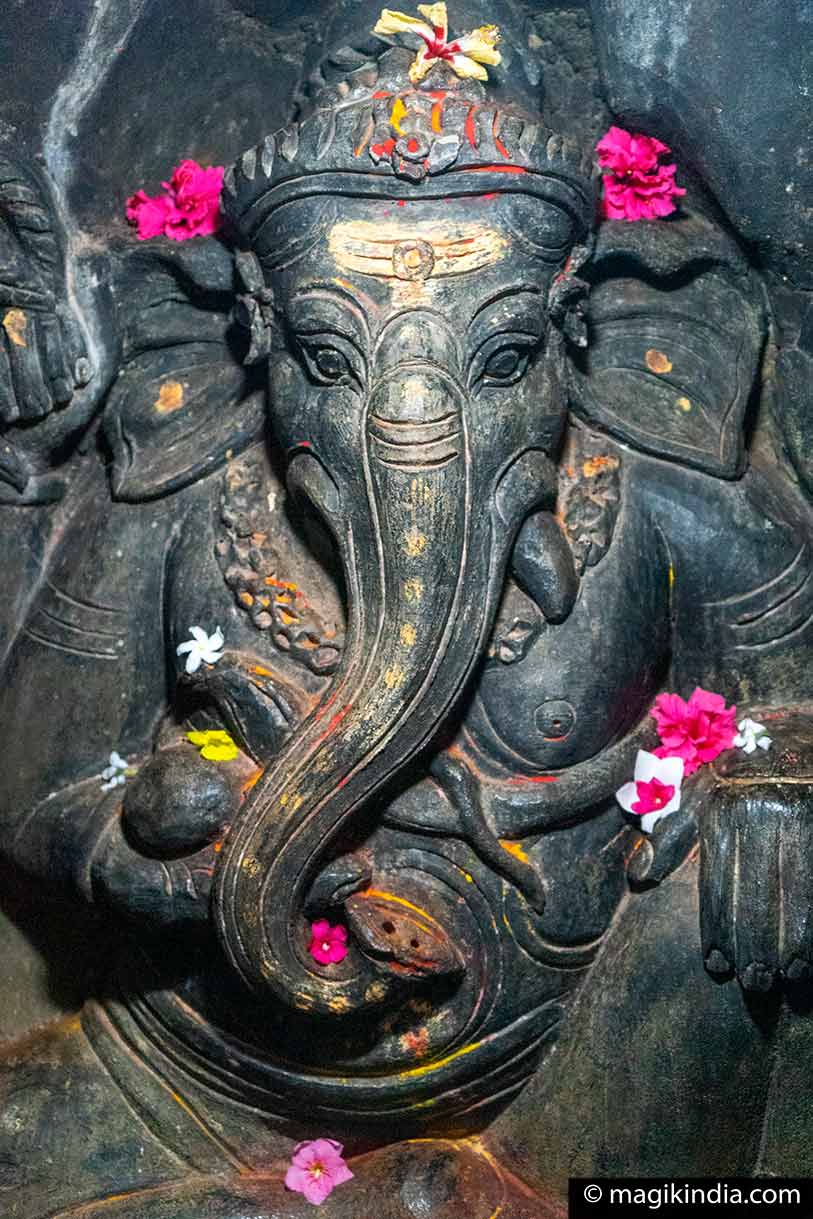
These caves were carved out of solid sandstone on a hillside in the 4th to 7th centuries A.D.
There are several caves but the best known largest one has four stories with a huge statue of Vishnu in a reclining posture, sculpted from a single block of granite inside the second floor. The third floor is adorned with numerous beautiful sculptures, including lions and saints.
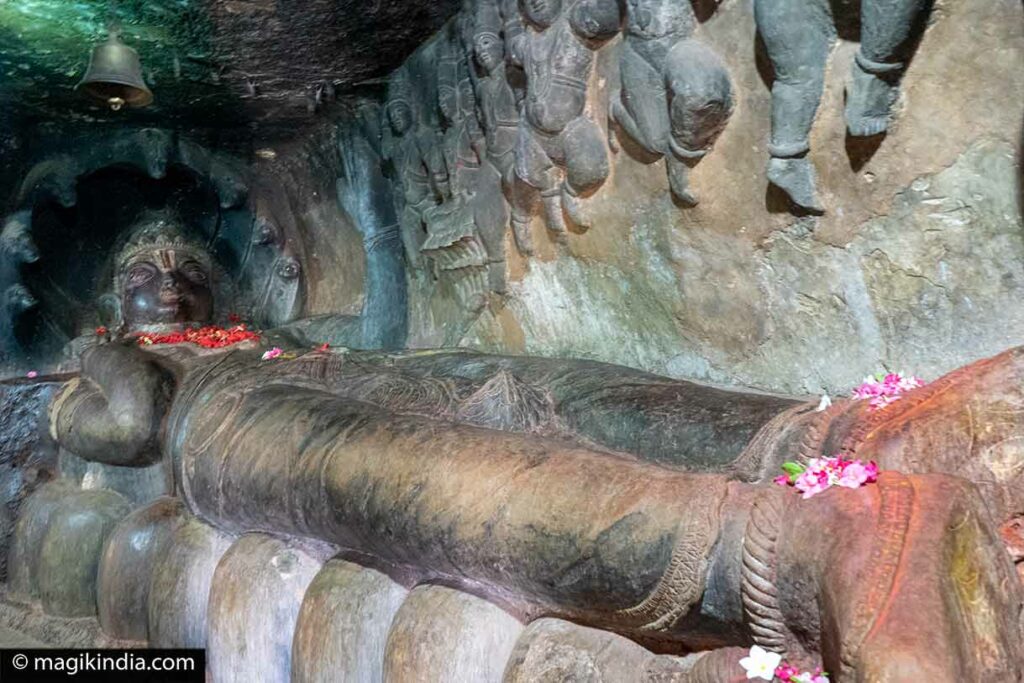
Initially the caves served as the Bhikkhu monastic complex.
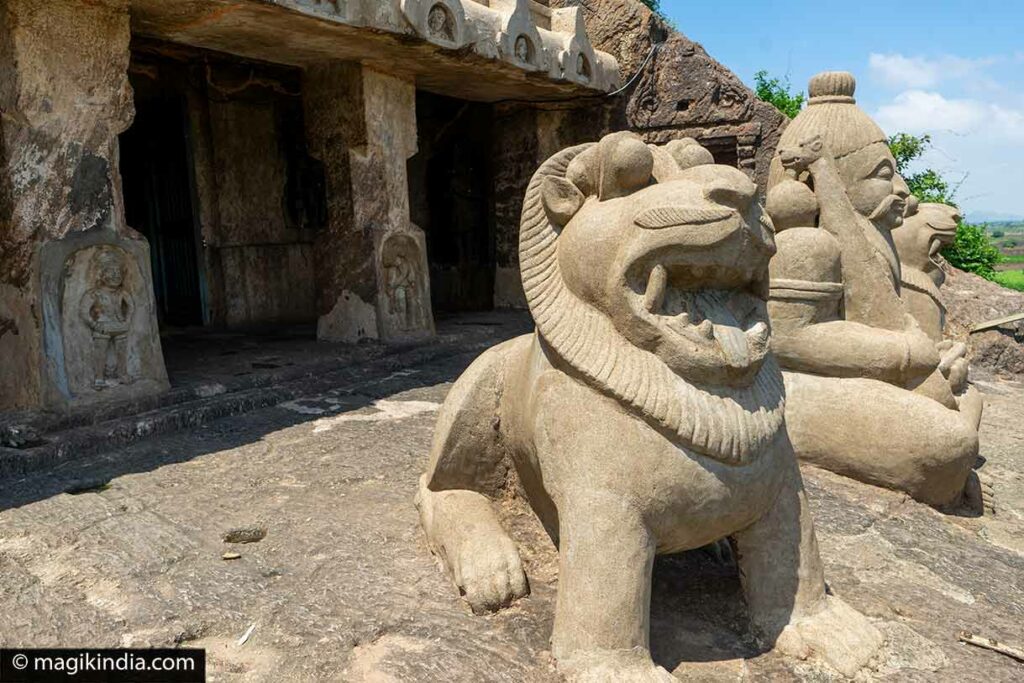
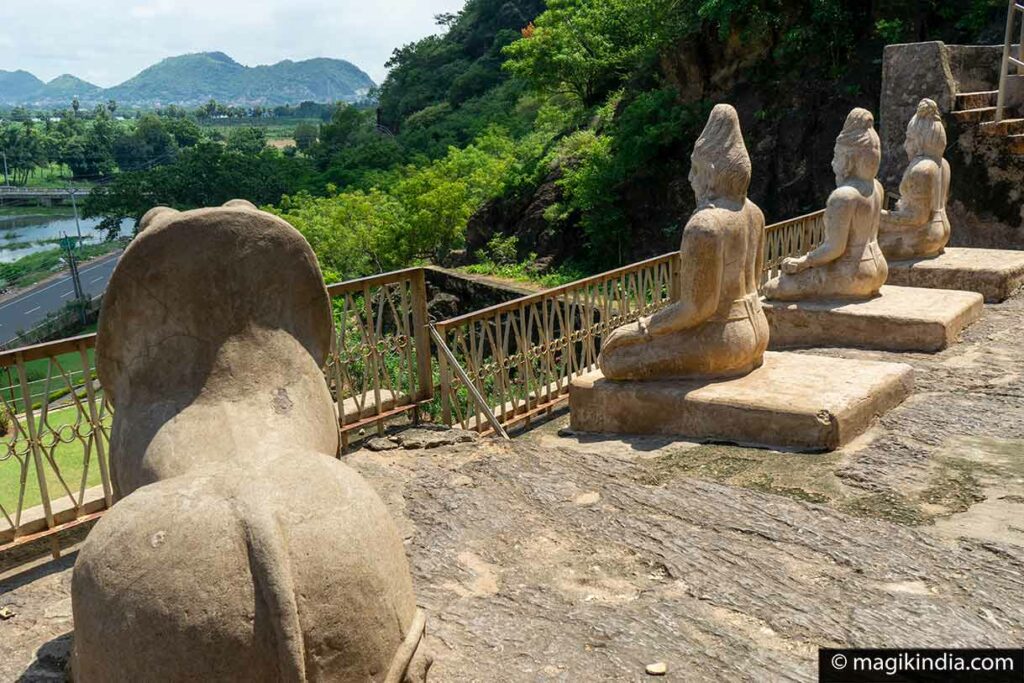
Mangalagiri

Mangalagiri, the auspicious hill, 11km from Vijayawada is an interesting visit to do for its spiritual fervour. It is an important place of pilgrimage for Hindu devotees. This is the abode of Lord Vishnu, who manifested himself in the form of Thotadri. There are three Vishnu temples : Lakshmi Narasimha Swamy at the foot of the hill, Panakala Narasimha Swamy and Gandala Narasimha Swamy on the hill.
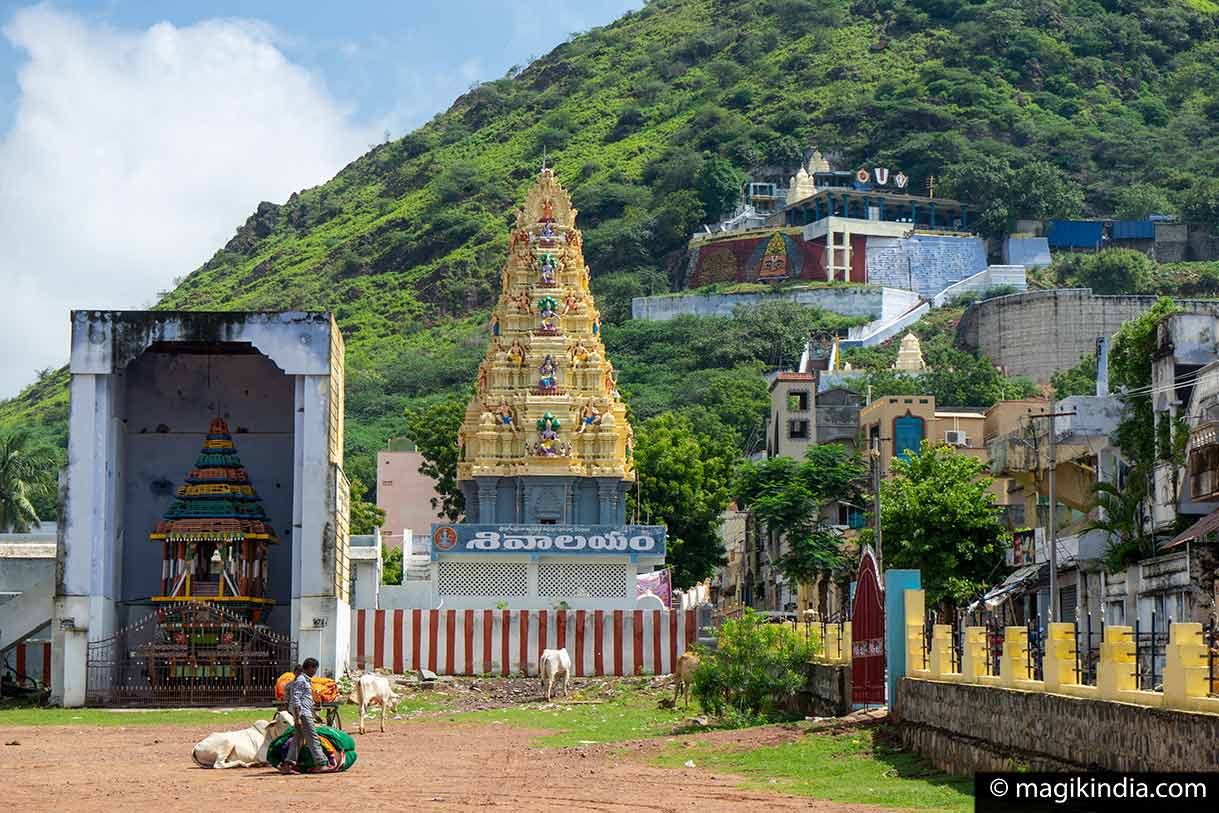
According to Hindu tradition, Mangalagiri is one of the 8 important ‘Mahakshetrams’ or most sacred temples dedicated to god Vishnu. The seven other Mahakshetrams are Srirangam, Srimushnam, Naimisam, Pushkaram, Salagamadri, Narayanasramam and Venkatadri (Tirupati).
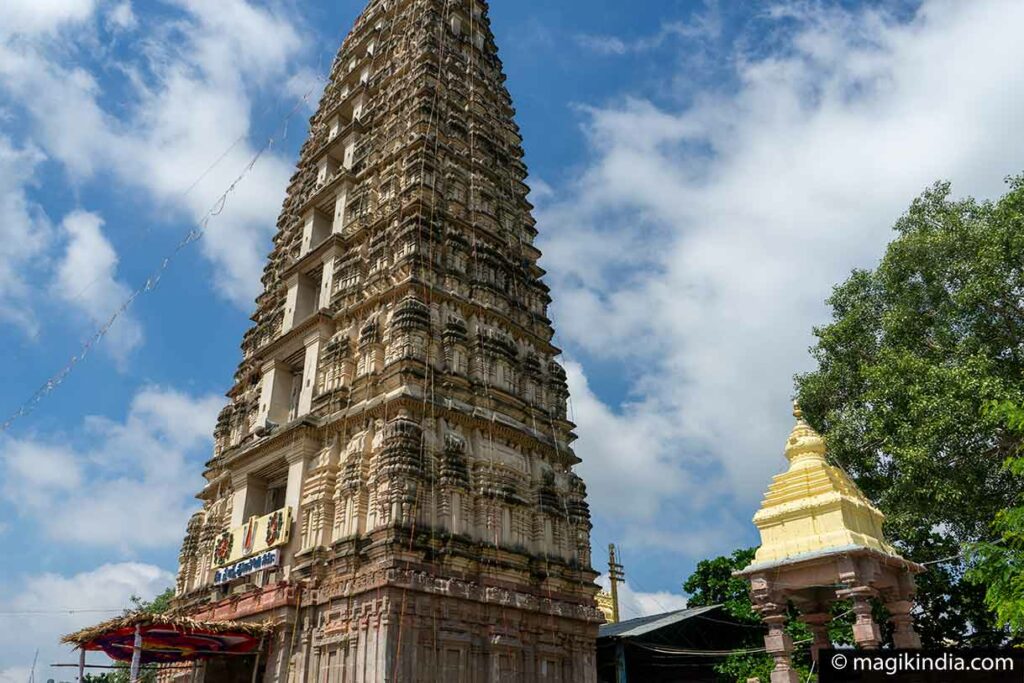
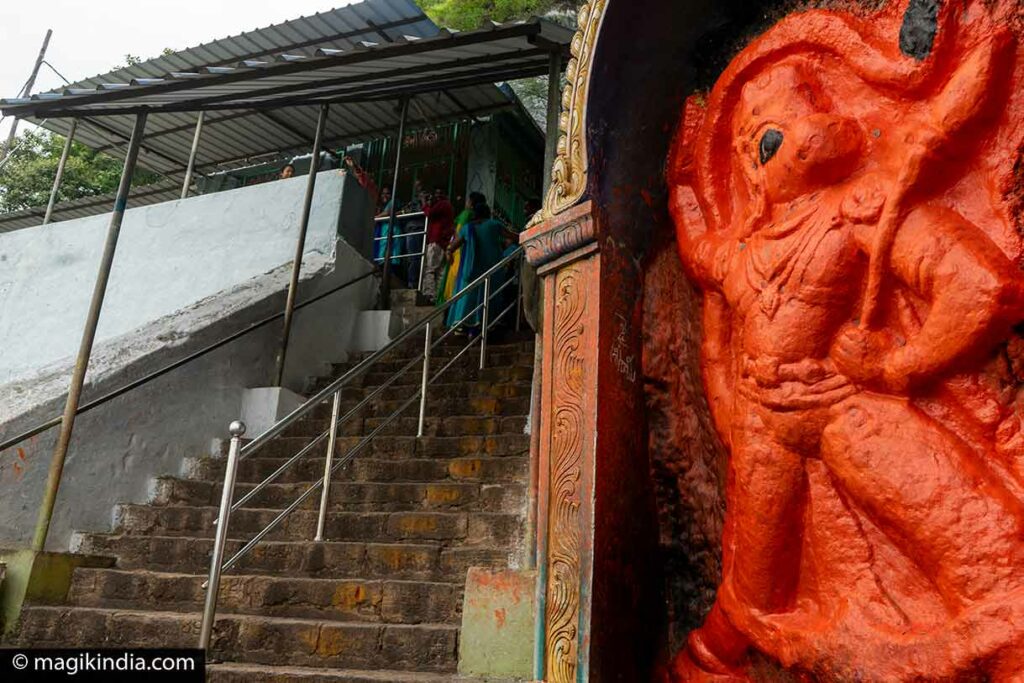

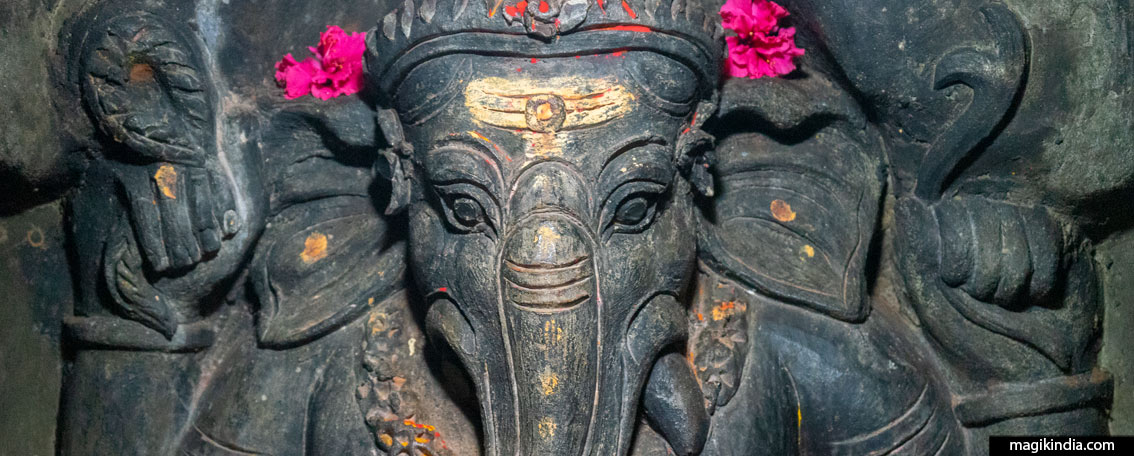

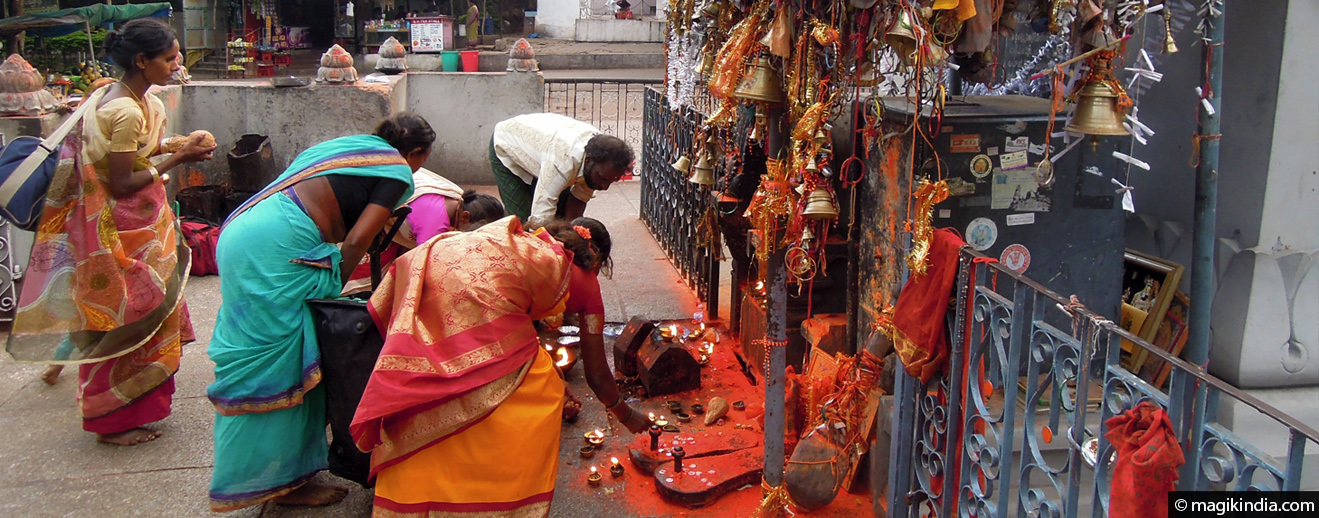
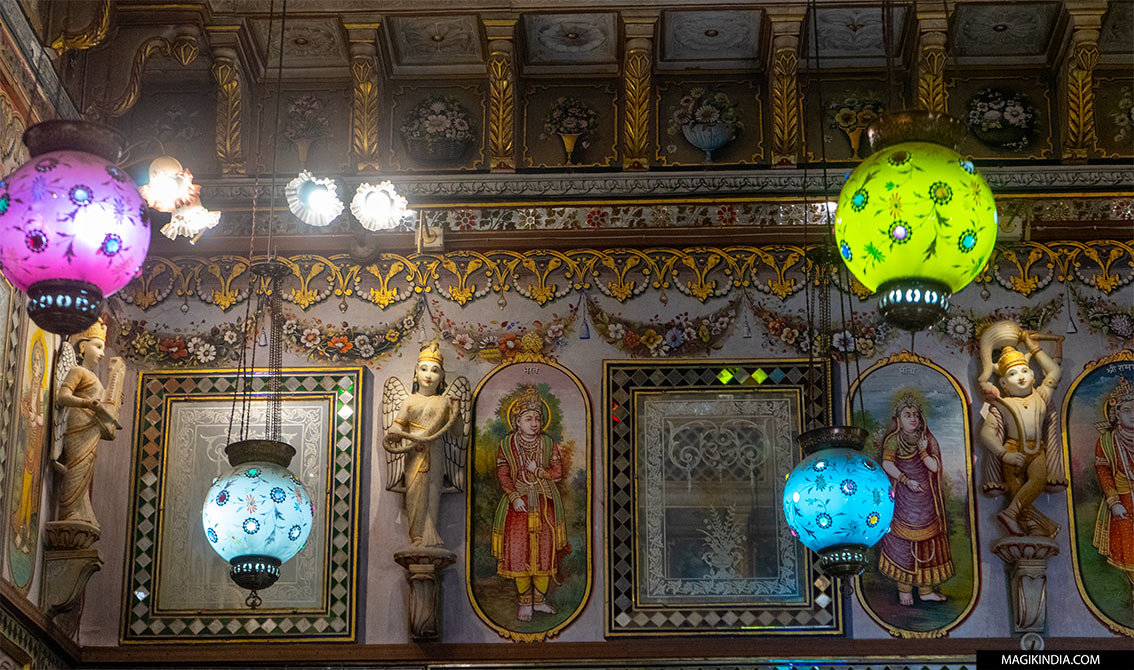
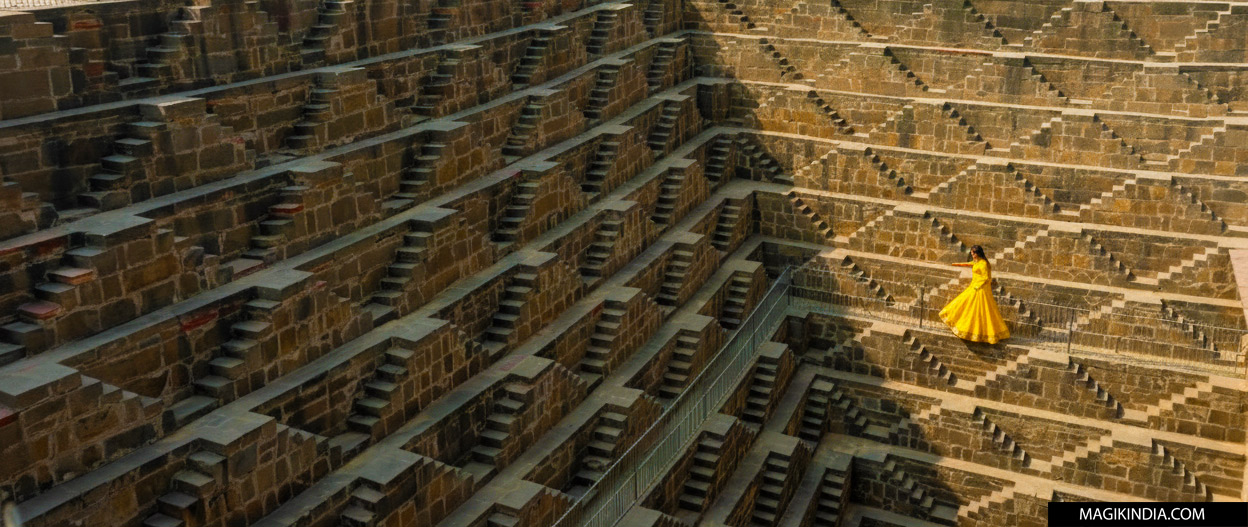
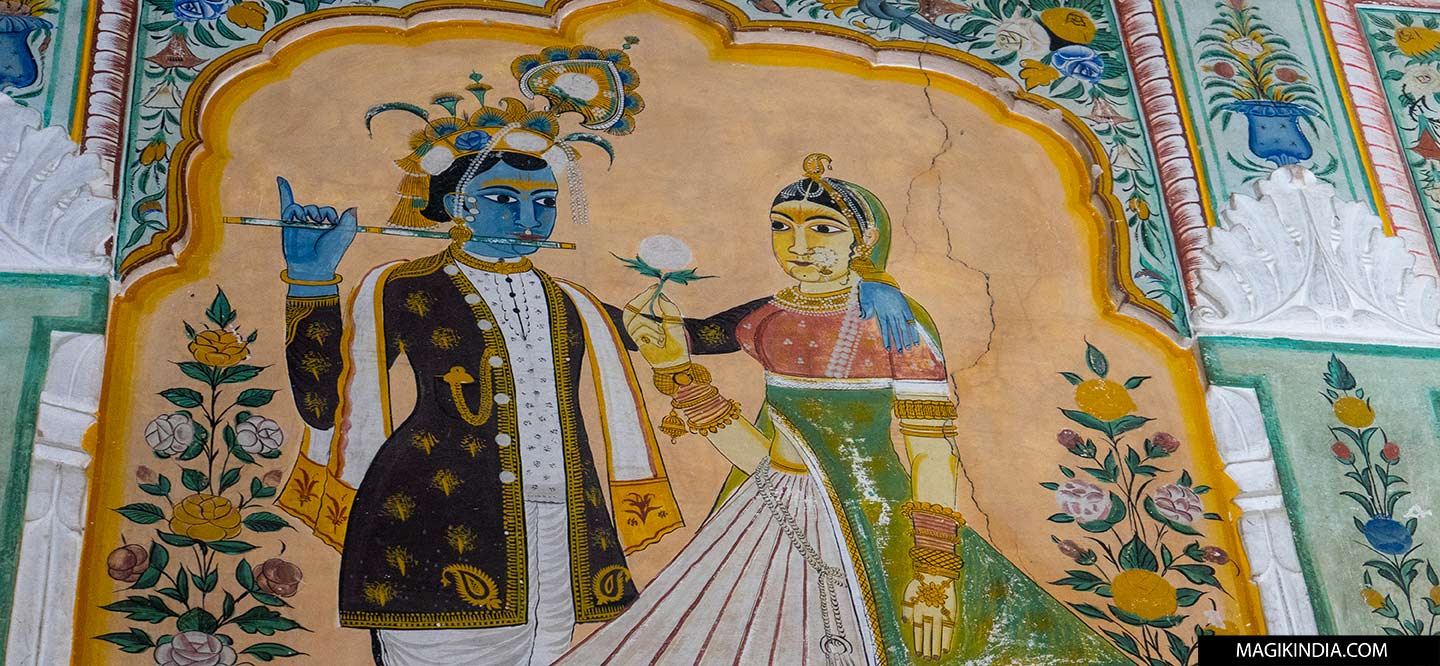
Mathini,
I am amazed that you visited the places that are popular with domestic tourists. Normally, many places are open to Hindus only. I am curious whether you become a Hindu.
Hi Vish, Thanks for your message. I’m married to an Indian hindu and I perform pujas so I guess I can say I’m a bit hindu. 🙂 Best regards, Mathini
Very good presentation.
Thanks Octavio 🙂